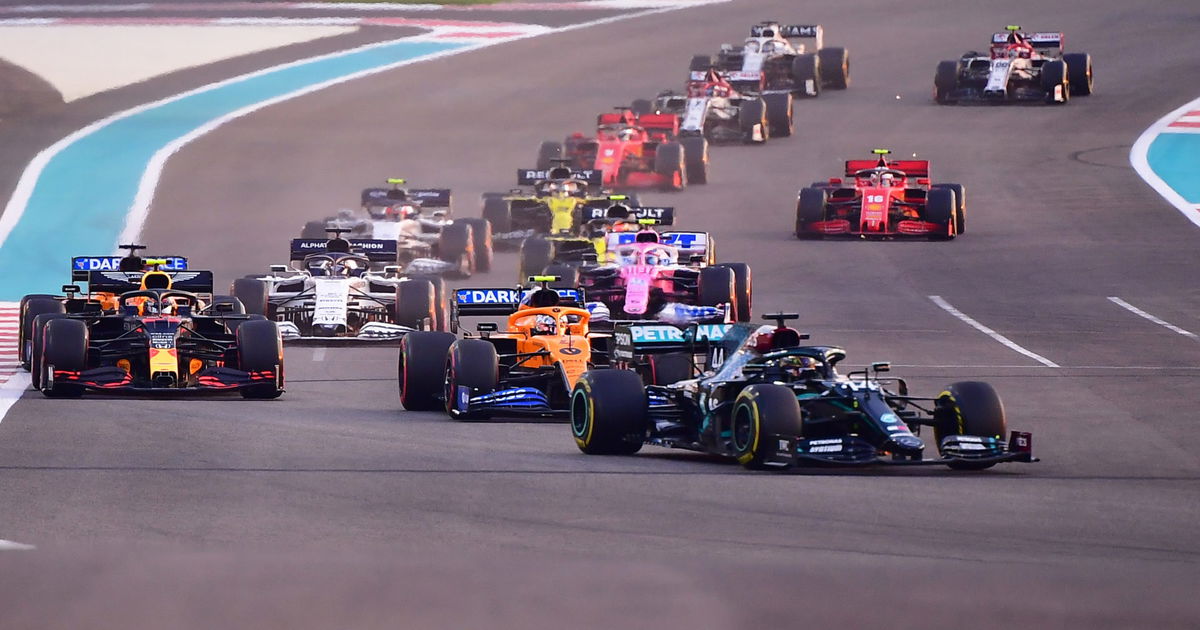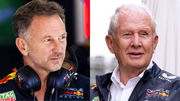
Reuters
Formula One F1 – Abu Dhabi Grand Prix – Yas Marina Circuit, Abu Dhabi, United Arab Emirates – Mercedes’ Lewis Hamilton in action at the start of the race Pool via REUTERS/Giuseppe Cacace

Reuters
Formula One F1 – Abu Dhabi Grand Prix – Yas Marina Circuit, Abu Dhabi, United Arab Emirates – Mercedes’ Lewis Hamilton in action at the start of the race Pool via REUTERS/Giuseppe Cacace
The new F1 regulations work towards making the 2022 car safer and more competitive than ever. The upcoming car design will have simplified top-body aerodynamics and the front wing will carry a more neutral design to make it aerodynamically sensitive and tackle the “dirty air” and ensure close battles.
Watch What’s Trending Now!
Every F1 fan has heard the terms ‘dirty air’ and ‘slipstream’. But what do they mean? The two terms are quite similar but with a slight difference. The leading car in F1 always creates a downforce or negative lift which helps to keep the car on the track giving better stability. However, it creates a lower pressure zone behind the car.
Now the whole difference comes down to one aspect. Slipstream occurs when a car is behind another down a straight. Meanwhile, dirty air occurs in the corners, where the cars are already in a grip limited condition.
ADVERTISEMENT
Slipstream and 'dirty air' explained https://t.co/MPipjhJGyq pic.twitter.com/oGHq0i5BwO
— VarleyRedTop (@VarleyRedTop) August 27, 2020
Slipstream vs Dirty Air in F1
In simpler terms, when a car is down the straight, a low-pressure zone might help reduce the drag and give some extra pace. We can see this mostly on the tracks dominated by long straights.
ADVERTISEMENT
“If the following car is close enough, it can utilize this effect to be ‘drawn’ into that low-pressure zone. Thus, the following car works less hard to overcome the air resistance,” explains Jack Chilvers, Aerodynamicist at Williams team.
“So when you are not in a grip limited situation, slipstreaming can be used to your advantage because you do not require that downforce in a straight line,” he added.
ADVERTISEMENT
This is also another name of “tow”, which is used by drivers for their flying laps during the qualifying session. It can be an excellent asset on tracks like Jeddah.
Top Stories
Helmut Marko Drops Bombshell Claims Against Christian Horner Over Red Bull Power Grab Conspiracy

Who Are Lando Norris’s Parents? Meet Adam Norris and Cisca Wauman

Who are Zhou Guanyu’s Parents? Everything We Know About The Chinese Driver’s Family

Max Verstappen’s Siblings: Everything We Know About Victoria, Blue Jaye, Jason Jaxx, and Mila Faye

“Extremely Interested in Pursuing Her”: Tom Cruise Adds Fuel to Dating Rumors With Shakira by Giving Adorable Gift as a Token of Love After Miami GP Get Together

Why Is Slipstream Good But Dirty Air Bad? #F1 #Overtaking #DirtyAir #Slipstream https://t.co/Env68figAv via @YouTube pic.twitter.com/M0LoqXZAo6
— LoChifung ⛩ (@lo_chifung) February 18, 2018
On the other hand, dirty air is the heavily disrupted airflow coming off a car and is one of the major reasons drivers struggle to follow one another closely. It arises out of a similar situation but around the corners when cars need grip more than the pace.
ADVERTISEMENT
“Typically, the driver will drive to the aero balance set up to make them feel comfortable and have the confidence to turn into a corner. So, as the car starts to lose aero balance, the driver has to back out. And that’s why you get that hit in performance,” says Chilvers.
It is clear that the “dirty air” takes a hit on the performance of the car. So, it’s the key challenge the designers of the 2022 car have tried to tackle to ensure close racing.
With a whole new set of regulations, the 2022 F1 season will surely be an exciting one.
ADVERTISEMENT
Read More- Former Red Bull Driver Explains Why F1 Should Embrace Max Verstappen
ADVERTISEMENT
ADVERTISEMENT
ADVERTISEMENT

